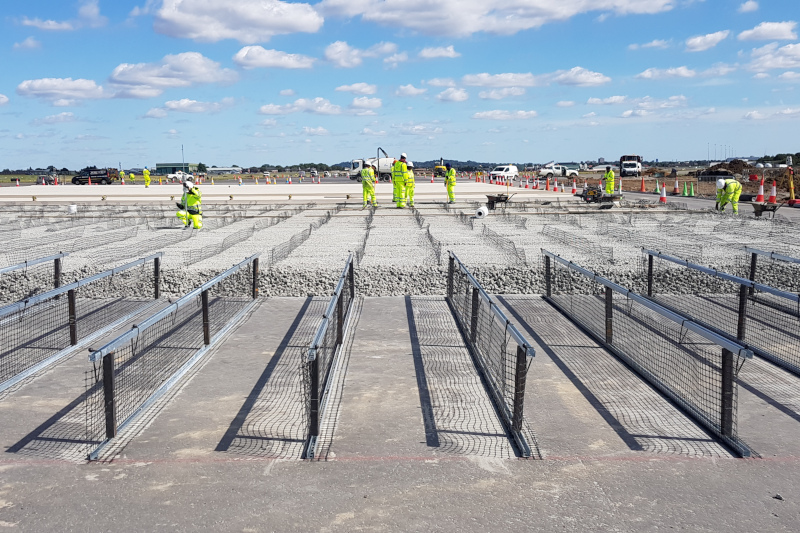RAF Northolt Runway & EMAS
Design Management
Project summary
The resurfacing of the runway at RAF Northolt represented a £23m investment by the Ministry of Defence. The base is also home to No. 32 Squadron, which is charged with providing governmental transportation duties, and played a significant role shuttling diplomats between London and Brussels during Brexit negotiations. While the project focussed on providing a rehabilitated surface for a design life in excess of fifteen years, it was unique in that the scope of works included the installation of two Engineered Material Arresting Systems (EMAS) at each end of the runway. This represented the first time EMAS had been approved for use in the UK and required extensive collaboration between various stakeholders.
Scope of services
The multi-disciplinary and multi-organisational collaboration required to deliver this project necessitated an approach to the design similar to that at RAF Marham. Although a significantly smaller project, the number of stakeholders involved and the six-month project delivery phase required a ‘right first time’ outcome. The design team was again structured into defined reporting lines and careful management of the interfaces while special attention was paid to the interactions between the EMAS designer and the airfield civil engineer.


Aside from the technical interfaces, three separate design review events were held with attendees from the Defence Infrastructure Organisation, the RAF, the designer, the contractor and the base’s facilities management contractors. These events were instrumental in addressing concerns across the stakeholder groups and facilitated a well-informed and collaborative environment during construction operations. In addition, with the airfield surrounded by residential suburbs, a significant part of the design team’s efforts was in providing support to landowner negotiations for approach light installations as well as attending community outreach events in conjunction with RAF personnel.
Benefit
The focus on paying special attention to design interfaces and stakeholder engagement played a significant part in delivering this project on time and on budget. De-risking the programme upfront by engaging with multiple parties prior to construction shows the value of a well-coordinated design. These early efforts also served to facilitate a smooth transition between design and construction as relationships were already established between the RAF and contractor well in advance of works getting underway.